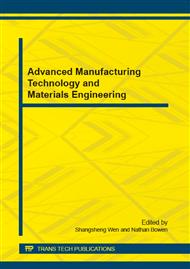p.191
p.196
p.203
p.211
p.215
p.220
p.224
p.228
p.232
Difference of Mixing and Cocrystallization of TNT and CL-20 Studied by Molecular Dynamics Simulation
Abstract:
For the purpose of studying the difference of mixing and cocrystallization of TNT(2,4,6-trinitrotoluene) and CL-20(2,4,6,8,10,12-hexanitrohexaazaisowurtzitane), molecular dynamics simulation(MD) was performed within Discover code. After the equilibrium of the system, the average bond length of trigger bond(Lave) is almost unchanged after mixing or cocrystallization. However, the largest bond length of trigger bond(Lmax) of CL-20 in cocrystal is shorter than that of it in pure CL-20, indicting the cocrystal is more difficult to be detonated than CL-20. The Lmax of TNT shows the same result. The cocrystal shows a larger cohesive energy density than composite ones, suggesting the cocrystal is more insensitive. Besides, trigger bond energy of cocrystal is larger than physical mixture of TNT and CL-20, suggesting the cocrystal is more insensitive. The mechanical properties show the cocrystal is more harder than pure TNT or CL-20, but has a weaker ductibility and tenacity.
Info:
Periodical:
Pages:
215-219
Citation:
Online since:
December 2014
Authors:
Keywords:
Price:
Сopyright:
© 2015 Trans Tech Publications Ltd. All Rights Reserved
Share:
Citation:


